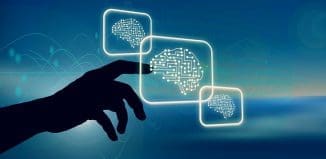Future of Intelligence-Led Policing is Already Here
This post is also available in:  עברית (Hebrew)
עברית (Hebrew)
A new police system is now trialled by the UK police. At the cutting edge of intelligence-led policing, VALCRI is a semi-automated analysis system that helps find connections humans often miss. When pre-empting crime or investigating a case, it can be deployed by analysts to reconstruct situations, generate insights and discover leads.
VALCRI system will be able to do the laborious parts of a crime analyst’s job in seconds, freeing them to focus on the case, while also provoking new lines of enquiry and possible narratives that may have been missed. Through autonomous work or collaboration with a human team, VALCRI creatively analyses data from a wide range of mixed-format sources. It displays its findings with easy-to-digest visualisations, comes up with possible explanations of crimes, and paves the way for rigorous arguments.
According to newscientist.com, VALCRI, developed by a European Union project, was designed to help generate plausible ideas about how, when and why a crime was committed as well as who did it. It scans millions of police records, interviews, pictures, videos and more, to identify connections that it thinks are relevant. All of this is then presented on two large touchscreens for a crime analyst to interact with.
The system might spot that shell casings were found at several recent crime scenes including the one the police are focusing on now, for example. “An analyst can then say whether this is relevant or not and VALCRI will adjust the results,” says one of the project managers in Middlesex University London. Thanks to machine learning, the system improves its searches on the basis of such interactions with analysts, who can raise or lower the importance of different sets of criteria with a swipe.
When an unsolved crime lands on an analyst’s desk, one of the first things they have to do is search police databases for incidents that could be related based on their location, time or modus operandi, and collect details of all of the people involved. “An experienced analyst needs 73 individual searches to gather all of this information, before manually putting it into an easily digestible form,” says Kodagoda. “VALCRI can do this with a single click.”
This is no mean feat. A lot of the information recorded in police reports is in side notes and descriptions, but the algorithms powering VALCRI can understand what is written – at a basic level.
For example, interviews with people at three different crime scenes may describe an untidy person nearby. One person might have used the word “scruffy”, another “dishevelled” and the third “messy”. A human would have no trouble considering that all three might be describing the same person. Improvements in artificial intelligence mean VALCRI can make such links too. The system can also use face recognition software to identify people in CCTV footage or pictures taken at a scene.
West Midlands Police in the UK are currently testing VALCRI with three years’ worth of real but anonymised data, totalling around 6.5 million records. Police in Antwerp, Belgium, are trialling a version of the system too.
The next stage is to let VALCRI loose on non-anonymised, new data as crimes happen. This has been agreed in principle, but getting the final go ahead is a delicate process. Police techniques used during an investigation can be challenged in court, so deploying VALCRI too soon or incorrectly could cause cases to collapse. And laws vary between countries on how police data can be used.
An added complication is that many people would be uncomfortable with computers determining the probability of different narratives explaining a crime. “The data in a crime case is simply not good enough to do that, so VALCRI doesn’t either,” says team member Ifan Shepherd at Middlesex. “A human analyst always has to call the shots.”
Having humans in charge won’t solve everything. “Machine learning can help the police, but it will introduce new biases too,” says Mark Riedl at Georgia Tech in Atlanta. It will be easy for analysts to think the system has identified all the relevant characteristics, but it is bound to miss some as well.
VALCRI tries to counteract this by making the whole process transparent. Results are never hidden, and every decision can be retraced.
According to VALCRI website, the system’s distributed processing architecture is driven by high-level privacy and security requirements, meaning data is safe from theft and corruption.





























